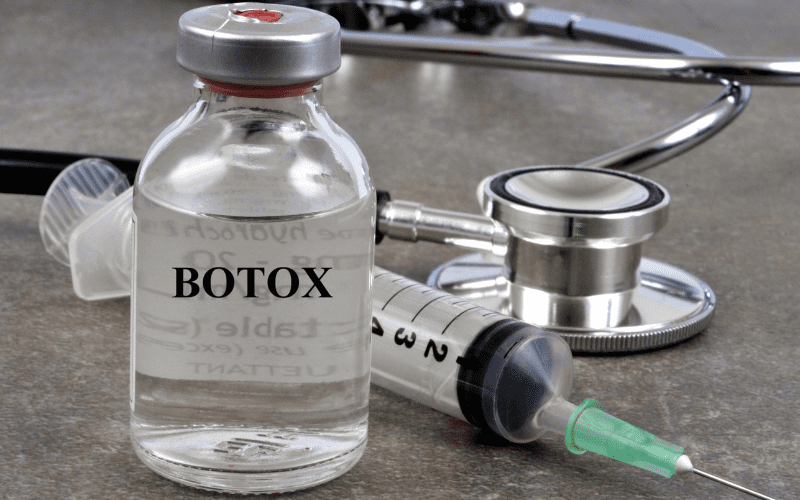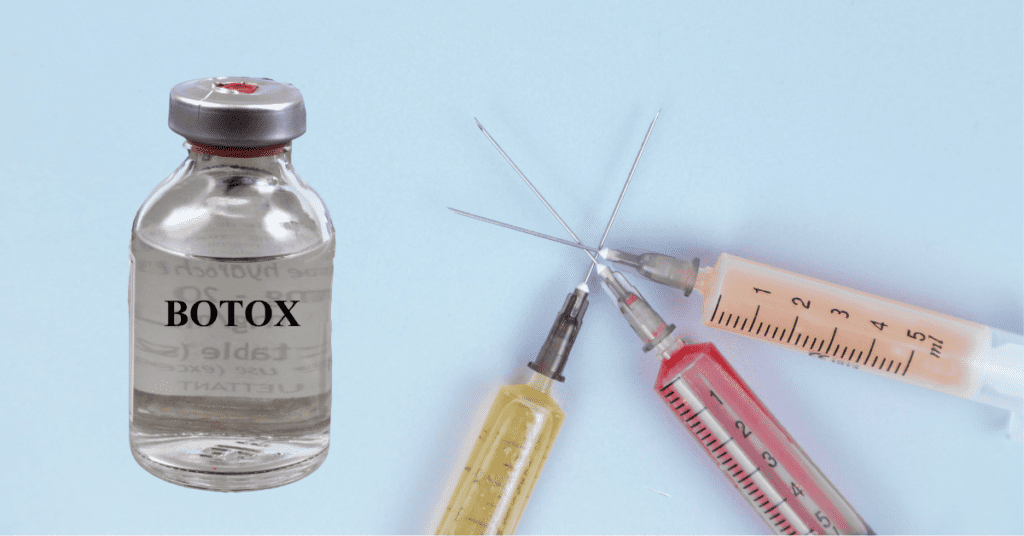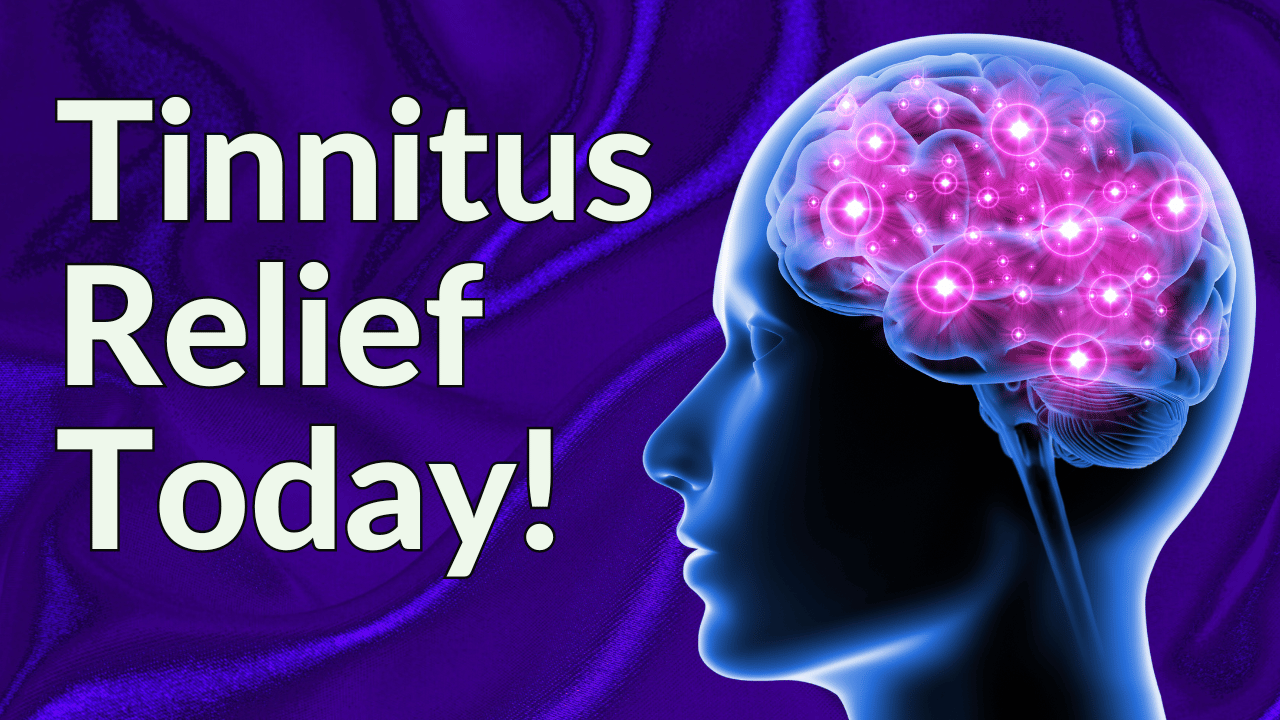Botox is one of the most easily recognized brands of botulinum toxin injections, which are most frequently known for their ability to “freeze” the muscles of the face and thereby reduce the appearance of wrinkles. Botulinum toxin is a type of neurotoxin that can affect the nerves and cause muscle weakening for a period of time, up to a few months. These injections can be used for cosmetic and medical reasons, though recent research has focused more on areas outside of cosmetic treatments for wrinkles and fine lines, and has even ventured into using Botox for tinnitus. Using botulinum toxins for tinnitus relief is one of the considerations we will delve into below, as well as primary tinnitus treatments currently recognized and recommended for effective intervention for the ears.
Let’s take a look at Botox and other types of botulinum toxin to determine how they work, and how they have come to be associated with the treatment of tinnitus.
How Does Botox Work?


Botox should be only be administered by a qualified healthcare professional, as it is injected into specific muscles within the body. It is most well known for it’s ability to smooth muscles and reduce the appearance of wrinkles, but it can also be used to help lessen the likelihood of developing migraine headaches, and treat a wide range of other conditions, including neck spasms, lazy eye, bladder issues, muscle spasms associated with cerebral palsy, middle ear myoclonus, and tinnitus. In addition to freezing the muscles themselves, the toxin blocks nerve signals to muscles, making it impossible for those muscles to contract.
"Treble Health helped me reduce my tinnitus by about 80%, and now I can live my life again!"



"Treble Health helped me reduce my tinnitus by about 80%, and now I can live my life again!"
– Steve D.
Book a free consultation to learn which Treble Health solution is right for you. Join Steve and thousands more who have found lasting tinnitus relief.
The precise injection site and dosage varies based on the condition being treated, but the basics of treatment are the same: a qualified healthcare professional inserts the botulinum toxin type preferred for a specific condition via a needle, and patients are instructed to monitor their health for any changes or adverse reactions. The effect is not permanent, and should not be regarded as a cure, but can be used as a temporary solution to mitigate symptoms for 3-6 months.
How Could Botulinum Toxin A (Botox) Be Used In The Treatment Of Tinnitus?
Botox treatment has been used to treat tinnitus in conjunction with conditions such as middle ear myoclonus, as well as with tinnitus associated with migraines as a result of craniocervical somatic tinnitus symptoms.
Within the middle ear, there are three small bones called the ossicles. These are suspended inside of the middle ear cavity by two small middle ear muscles called the stapedius and the tensor tympani, both of which play an important role in hearing function and protection. When they are not working correctly, middle ear disease and dysfunction can occur, including tinnitus, with a significant decrease in general function and a greater likelihood of developing persistent tinnitus symptoms. When the muscles develop a twitch, become dysfunctional, or experience damage, medical treatment and other interventions are often necessary.
What Is Middle Ear Myoclonus (MEM)?



Middle Ear Myoclonus (MEM) is not a type of tinnitus, but it is a condition that can cause tinnitus symptoms. MEM involves abnormal, repetitive contractions of the middle ear muscles, specifically the stapedius and tensor tympani. These contractions can lead to auditory symptoms such as clicking or ticking sounds, which can manifest as a form of objective tinnitus. In objective tinnitus, the noise or symptoms are not only heard by the individual affected but can also be observed by an external party, often through medical instruments. In this particular condition, the phantom sounds heard are usually described as rhythmic clicking or ticking, but the precise sound can vary from patient to patient. Objective tinnitus like pulsatile can be linked to more serious medical conditions, as well, so it is important to speak with a healthcare professional for an accurate diagnosis.
How Can Botox Treatment For MEM Help?
By applying botulinum toxin to the middle ear space via injections, the muscles that are responsible for a twitch or spasm, and which are responsible for the observed clicking sounds, are frozen – therefore making them unable to cause the contractions leading to hearing disturbance. Therefore, tinnitus originating from MEM can be helped by botulinum injections. While it may not help with a chronic middle ear infection, it can help with the objective tinnitus with a statistically significant link to MEM. This patient population has shown significant benefit from Botox injections to the middle ear space, reporting up to 3-4 months of improvement to symptoms, and success with repeat treatments once that period of time has expired.
Craniocervical Somatic Tinnitus Associated With Migraines



While tinnitus can affect individuals with MEM, it can also affect populations with migraines. While not all tinnitus patients will report migraines on tinnitus questionnaires prior to receiving a diagnosis, migraines may not be an uncommon link to tinnitus and other ear disorders. What exactly is craniocervical somatic tinnitus, and how does it involve migraine headaches? We’ll take a closer look below.
What Is Craniocervical Somatic Tinnitus?
Tense muscles in the face, neck, and jaw can lead to the development of somatosensory tinnitus believed to be characterized by changes to loudness, pitch, or localization when stimulation and movement from the head or neck occurs. This means that a sensation of subjective tinnitus can arise based on different movements of the head and neck, and is also a common complaint affecting people with migraines. The resulting tinnitus can be unilateral tinnitus or bilateral tinnitus, both forms of non pulsatile tinnitus, and concurrent tinnitus treatment and migraine or head and neck injury treatment can be the best course of action to tackle all symptoms.
How Migraine Headaches Are Related To Tinnitus



Tinnitus is a common comorbidity of migraine headaches. One 2022 study showed that tinnitus associated with chronic migraine was successfully addressed by intramuscular craniocervical botulinum toxin A injections. Botulinum toxin type A is the most common type utilized for this condition, and results of the study were consistent with the dorsal cochlear nucleus hypothesis for craniocervical somatic tinnitus. This hypothesis suggests that nerve communication is the primary cause of tinnitus related to migraine headache and injuries to the head and neck.
To treat these symptoms using botulinum toxin, injections are placed around the ear, jaw, and head, depending on the precise location of a patient’s subjective source of pain or discomfort. Addressing the specific area in which pain is experienced means that the precise muscles involved will be addressed.
So, Can Botox Help Tinnitus?



While Botox may be little more than a placebo treatment for some forms of tinnitus, for others, the research does support the use of botox as a treatment of tinnitus. This is particularly true when MEM, somatic tinnitus, and migraine-related tinnitus are present. To use Botox effectively, the associated diagnosis should match one of the conditions identified above; evaluating subjective methods included questionnaires such as tinnitus handicap inventories, and patient report, but conditions like MEM can be more carefully and methodically identified by using imaging and other diagnostic tests. The same is true of neuropathic pain brought on by injury, and adult patients within the appropriate diagnostic requirements can benefit from Botox.
If you are experiencing symptoms of tinnitus that match any of the diagnoses identified above, it may be time to discuss botulinum injections with your healthcare provider. With no proven benefit for all types of tinnitus, the treatment may not be an ideal solution for everyone, but can be an excellent intervention for some forms of tinnitus involving injuries or muscle dysfunction. Discuss any comorbid conditions, oral medication, or even potential contraindications with a healthcare provider prior to pursuing a treatment course using Botox.
Tinnitus Types And Treatments
Tinnitus is usually diagnosed and treated by an Ear Nose and Throat specialist (ENT doctor) or an audiologist. Both of these healthcare professionals are trained to identify and subsequently treat conditions involving the ears, though an audiologist is typically recommended specifically for tinnitus treatment that does not involve a specific medical condition warranting medical intervention or surgery.
Although surgical treatment and Botox can be useful for some types of tinnitus, there are other tinnitus management practices that can help the types of tinnitus that cannot be helped by injections. Because some patients with tinnitus symptoms can also experience symptoms of major depression and anxiety, mental health intervention is often a recommended treatment avenue for tinnitus, as is Tinnitus Retraining Therapy (TRT), sound therapy, and hearing devices like hearing aids.
Next Step: Book Free Consultation
- 75% of patients reduced their tinnitus within three months after following our recommendations.
- "I feel like Treble Health literally gave me my life back." - Randy S. (verified customer)
- Join thousands of people who have reduced their tinnitus after scheduling a free consultation.




















